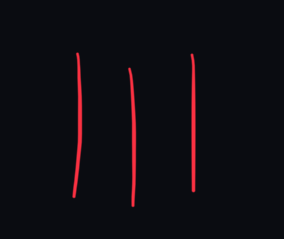*excerpt of todays lesson. Not sure if the image quality is top. You can let me know and I add a pdf. CORRECTION: The third chord is an incomplete triad with doubled thirds.
Schlüßfolgerungen:
1.Linearer Kontrapunkt (absolute Polyphonie): Stimmlage und weiche Stimmführung hat Priorität
2.Start und Ende (als Ganzschluss!) muss ein Zweiklang sein. Man erreicht stufenweise den Zweiklang, aber gerne mit Parallelen. (Merkwürdig ist aber der Halbschluß auf dem Leitton!: das ist aber ein Dreiklang. Und wird ohne Parallelen erreicht. Meine Erklärung dafür: der Zweiklang auf den Leitton würde noch fremder klingen! Der Dreiklang C#m gibt eine Gemeinsamkeit (e’) mit dem vorigen Tonleiter und Kontrast bezüglich dem Zweiklang, der bereits als Schlussklang erscheint.)
3. Mittelsatz ist “harmonisch egal”: es ist eine „logische“ Konsequenz der Anwendung der obigen Technik (linearer Kontrapunkt)
4.Die Vierklänge sehen in diesem Beispiel jedenfalls “geplant” aus: dieselbe Dissonanz (Bb’ und A’)kommt zwei Mal ähnlicher Weise vor (auf “vo” und “mus”)
5. Merkwürdig ist der 4/6 Dreiklang, bevor es “geregelt” wird
Der Kontrast zwsichen 1-2 und 2-3 macht diese Musik besonders ungewöhnlich. Genau deswegen öffnet es eine Tür zum modernen Expressionismus, wobei Gemeinsamkeiten wahrgenommen und – vor allem – neu entwickelt werden können.
Diese Art Musik wird von “harmonischen Härten” charakterisiert, das gelingt ihr aber mit besonderem Charm!
Das ist jedenfalls eine Betrachtung der ersten Seite nur… Du kannst gerne weiter in diesem Sinne die nächsten Seiten beobachten, und eventuell was neues finden, dass meine Schlussfolgerung widerspricht!
(e. Fróes)
